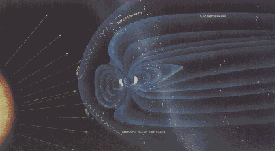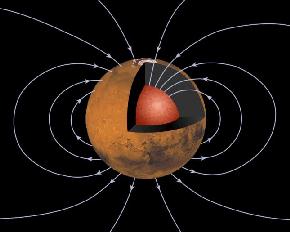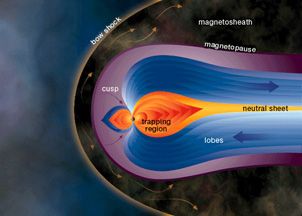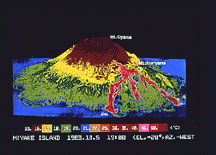Material which is magnetic
There are a few materials which are naturally magnetic, and have the potential to be turned into magnets. Some of these materials are
- iron
- hematite
- magnetite
- ionized gases (such as the material stars are made of)
A magnet can be made to stick to objects which contain magnetic material such as iron, even if they are not magnets. But a magnet cannot be made to stick to materials which are plastic, or cotton, or any other material, such as silicate rock, which is not magnetic.
Just because a material contains iron or some other magnetic material, however, it may not be a magnet. It takes special conditions to turn magnetic material into magnets. That is because a magnet is an object from which the force of magnetism originates.
 More on Magnetism
More on Magnetism
You might also be interested in:

Unlike the Earth, which has a protective shield around it called the magnetosphere, the surface of the moon is not protected from the solar wind. This picture shows the magnetosphere surrounding the Earth,
...more
An important new result from the Mars Global Surveyor (MGS) mission is the definite confirmation of the presence of a magnetosphere around Mars. Previous missions did not make really good measurements
...more
The force of magnetism causes material to point along the direction the magnetic force points. As shown in the diagram to the left, the force of magnetism is illustrated by lines, which represent the force.
...more
The Earth is a good example of a planetary dipole, where the lines of force point in a direction out of the South (magnetic) Pole and into the North (magnetic) Pole. Planets can also show evidence of quadrupoles
...more
A magnetometer is an instrument for measuring magnetic fields. Many spacecraft carry magnetometers to measure the magnetic fields around planets. When a spacecraft makes those measurements, what do the
...more
Electricity and magnetism are two very important topics in the science of physics. We use electricity to power computers and to make motors go. Magnetism makes a compass point North and keeps notes stuck
...more
Electromagnetic radiation is the result of oscillating electric and magnetic fields. The wave of energy generated by such vibrations moves through space at the speed of light. And well it should... for
...more















